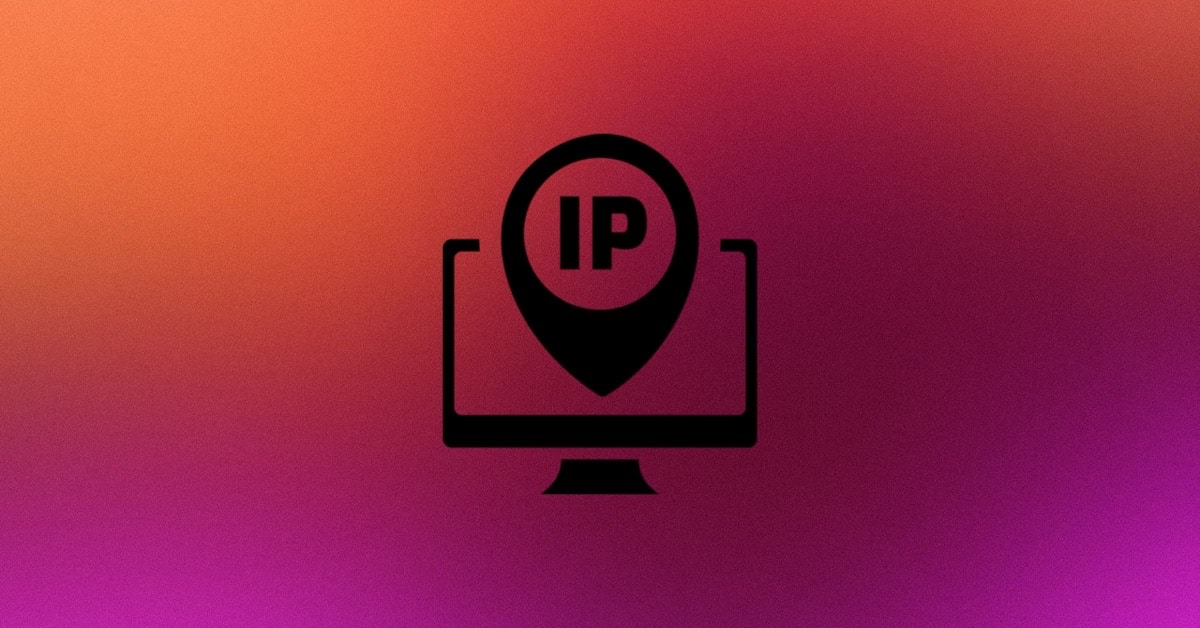There may be times where you need to know your IP address.
Thankfully, regardless of the device and browser you're using, it's easy to find.
What is an IP address?
Networks and the internet use numbers, or 'Internet Protocol (IP) addresses', to identify devices.
When it comes to your devices (e.g., laptop, smartphone), there is more than one IP address involved. One is how your device communicates to the internet at large. This is the IP address of your router and is assigned by your broadband provider.
Then, each device connected to an internal network (e.g., your home Wi-Fi) has its own IP address assigned to it by the router. This means that, all the nodes (devices) on the internal network can communicate effectively.
But how do you find your IP address? Before answering this, let's first take a look at public and private IP addresses and what they mean.
Public and Private IP addresses
Public IP address:- Asking “what is my IP address” is interchangeable with asking “what is my public IP”. Your public IP address is the one provided to you by your broadband provider. Your router uses your public IP address to identify you to the rest of the internet. This helps ensure that emails, websites, and any other content on the web reaches you correctly.
Private IP address:- A private IP address identifies different devices connected to the local network. Once your router has received information from the internet, it needs to know which device to send it to. The private IP address helps the router identify different devices on your network and forward the information correctly.
How to find your public IP address
The quickest and easiest way to locate your public IP address is to open up your web browser and navigate to the following: https://www.whatismyip.com . This site will tell you what your IP address is.
The top line will state 'Your public IPv4 is: xxx.xxx.xxx.xxx.' Below this, you may also see an address for a public IPv6 address. But what's the difference?
IPv4 vs IPv6
IPv4:- Most Internet Service Providers (ISPs) still use IPv4. It consists of four numbers from 0 to 255, and is separated by periods e.g., 120.69.77.7.
However, IPv4 can only generate 4.3 billion unique IP addresses. this means that the number of IPv4 addresses `available will eventually run out.
IPv6:- These are addresses made up of 8 blocks of numbers, with each block written as four hexadecimal digits, separated by colons e.g., 5400:BB40:1100:0000:0000:0000:0000:0001.
Unlike IPv4, IPv6 will never run out of unique addresses. However, IPv6 has not yet been fully implemented. This is due to the following:-
- IPv6 isn't backwards compatible with IPv4. This means that IPv4 websites won't display on a device that runs on IPv6.
- IPv4 hasn't yet run out of addresses, and so, as long as it continues to meet our needs, we will continue to use it over IPv6.
How to find your IP address on Windows
- Open the command prompt. To do this, type 'cmd' in the search box located next to 'Start' on the taskbar.
- Click on the command prompt app pop-up in the suggested results.
- In the command prompt app, type the following: ipconfig
- Your IP address will be listed under 'IPv4 address'.
How to find your IP address on MacOS
Here's how to find your IP address if you use an iMac or Macbook:-
- Click on the Apple logo on the top left-hand side of your screen
- Select 'System Preferences'.
- Select 'Network'.
- The network you're connected to will be automatically selected (indicated with a green light). Your IP address will appear under the 'Status' heading.
How to find your IP address on iOS (iPhone/iPad)
- Click on 'Settings'
- Select 'Wi-Fi'
- Click on the blue 'i' for information next to the network you're on (indicated by a blue tick next to the network name).
- Both IPv4 and IPv6 addresses will be displayed.
Do I need to hide my IP address?
Your IP address acts as a fingerprint of your online activity. Certain websites may store information about your online habits in order to learn more about you and your interests for marketing purposes. Your data could also potentially be sold to third parties without your consent.
IP addresses are also used to restrict access to certain content. For example, a content streaming app like Netflix offers different content depending on the country you're located in.
And, although it won't make you completely anonymous on the internet, hiding your IP address can be viewed as a positive step toward protecting your privacy online.
How do I hide my IP address?
A Virtual Private Network (VPN) is the most common tool you can use in order to hide your IP address. A VPN allows you to create a secure connection to another server so that data appears to come from that server you've connected to.
For example, if you live in London, and have a VPN, you can use that VPN to connect to a server in Sydney, Australia. This will mean that, your actual location (London) remains hidden, while data appears to come from Sydney, Australia.
Compare broadband deals
We find deals from all the top providers and help you switch.
